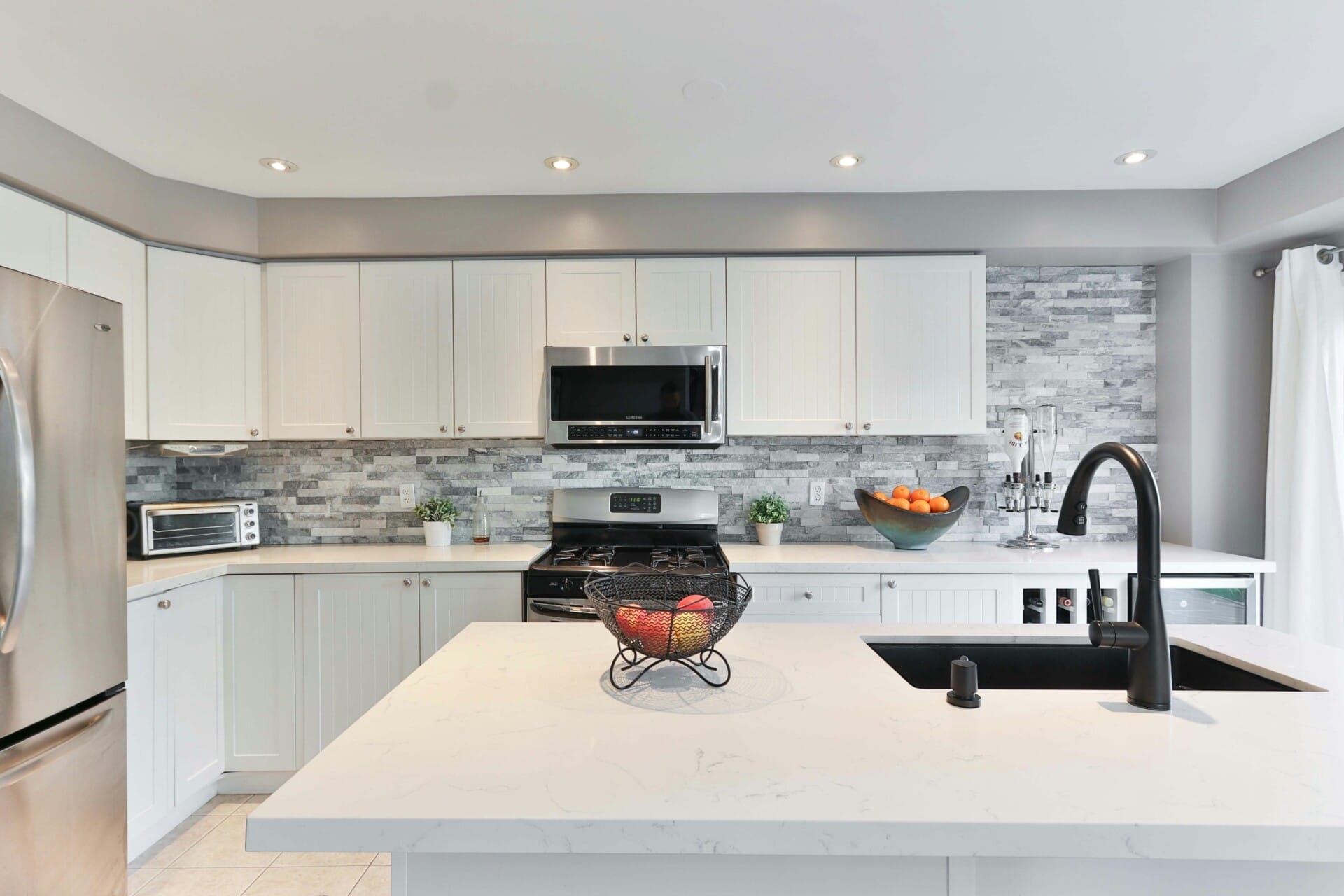In an era where sustainability is at the forefront of architectural innovation, the choice of building materials plays a pivotal role in shaping our environments and our future. As the global community grapples with the challenges of climate change and resource depletion, the demand for quality materials that are both durable and environmentally friendly has never been more critical. This article delves into the intricate process of selecting building materials that not only meet aesthetic and functional needs but also align with ethical considerations and sustainability principles.
From the timber used in frameworks to the insulation that keeps our homes cozy, every component contributes to the overall ecological footprint of a construction project. With an overwhelming array of options that boast various certifications, claims, and features, making an informed decision can feel daunting. However, the importance of this selection process cannot be overstated; it impacts not only the health and well-being of occupants but also the future of our planet.
In the following sections, we will explore key factors to consider when choosing building materials, from understanding life cycle assessments and certifications to recognizing the advantages of regional sourcing and recycled content. We will also highlight innovative alternatives that push the boundaries of traditional building practices while maintaining a commitment to quality and environmental stewardship. By equipping ourselves with the knowledge to make thoughtful choices, we can contribute to a more sustainable built environment—one that honors both our present and future generations. Join us on this informative journey towards selecting the very best in environmentally friendly building materials.
Understanding Sustainable Materials in Construction
In the realm of construction, choosing the right materials goes beyond aesthetics and performance; it intertwines with our commitment to environmental stewardship. Sustainable materials not only minimize ecological footprints but also enhance the longevity and health of living spaces. To understand what makes a material sustainable, it’s essential to consider the lifecycle from extraction and manufacturing to usage and disposal. The goal is to select materials that are renewable, recyclable, and non-toxic.
To evaluate the sustainability of building materials, consider factors such as their source, processing, and overall impact. Recycled materials, like reclaimed wood and steel, reduce waste and energy consumption, while biodegradable options, like bamboo and cork, offer renewability and quick degradation post-use. Additionally, opt for materials certified by reputable organizations, like the Forest Stewardship Council (FSC) or Leadership in Energy and Environmental Design (LEED). This can help ensure you’re making a choice that aligns with environmental standards.
When assessing materials, it’s useful to create a comparison based on specific criteria. A simple table can aid in visualizing key aspects of potential choices:
| Material | Source | Sustainability Feature | Certifications |
|---|---|---|---|
| Reclaimed Wood | Old Structures | Reduces landfill waste | FSC, LEED |
| Bamboo | Fast-growing Grass | Renewable resource | Bamboo Verified |
| Recycled Steel | Scrap Metal | Diverts waste | Recycled Content Certification |
| Natural Insulation (e.g., Wool) | Renewable Animal Fiber | Low environmental impact | Cradle to Cradle |
Ultimately, a conscious choice of materials can lead to reduced energy consumption, improved indoor air quality, and a healthier planet. With proper knowledge and resources, selecting high-quality, environmentally friendly building materials becomes a crucial step in sustainable construction practices.

Evaluating Certifications and Standards for Eco-Friendly Choices
When selecting building materials that respect our planet, it’s crucial to scrutinize the certifications and standards that underpin their eco-friendliness. Various certifications provide a clear framework to assess the sustainability of products, focusing on aspects such as resource sourcing, manufacturing processes, and overall environmental impact. Familiarizing yourself with these certifications can empower you to make informed decisions that align with your values.
Some prominent certifications to look for include:
- LEED (Leadership in Energy and Environmental Design): A globally recognized standard for green building that evaluates the environmental performance of a project.
- FSC (Forest Stewardship Council): Ensures that wood products come from sustainably managed forests, promoting responsible forestry practices.
- Cradle to Cradle Certified™: Measures the safety, circularity, and responsibility of materials used in products.
- Energy Star: Identifies energy-efficient products that help reduce greenhouse gas emissions.
In addition to certifications, you might also want to consider industry standards that promote environmental stewardship. For example, the ISO 14001 standard offers a framework for organizations to improve their environmental performance through more efficient resource use and reduction of waste. To illustrate the relationship between certifications and their focus areas, the following table summarizes important features of select certifications:
| Certification | Focus Area |
|---|---|
| LEED | Energy efficiency, water usage, sustainable materials |
| FSC | Sustainable forestry practices |
| Cradle to Cradle | Product lifecycle, material health |
| Energy Star | Energy efficiency in appliances and buildings |

Assessing Life Cycle Impact and Durability of Building Products
When evaluating the impact of building materials on the environment, it’s crucial to look at their entire life cycle. This entails considering factors from raw material extraction, manufacturing processes, transportation, use, and ultimately, disposal. A comprehensive analysis allows builders and homeowners to understand not just the immediate effects of a product, but also its long-term implications on the planet. A thorough life cycle assessment (LCA) identifies key attributes such as energy consumption, carbon emissions, and waste generation.
Durability plays a pivotal role in the sustainability of building materials. Products that are built to last reduce the need for frequent replacements, which in turn minimizes waste and decreases the environmental footprint. Look for materials that have undergone rigorous testing for weather resistance, fire safety, and wear and tear. These attributes not only ensure longevity but also provide significant cost savings over time. Common durable materials include:
- High-density concrete
- Fiber cement siding
- Timber treated with eco-friendly preservatives
- Recycled steel
To facilitate your decision-making process, you can refer to the following comparison table of selected building materials based on their environmental impact and durability ratings:
| Material | Environmental Impact (Low/Medium/High) | Durability (Years) |
|---|---|---|
| Recycled Aluminum | Low | 50+ |
| Brick | Medium | 100+ |
| Wood (FSC Certified) | Medium | 30-50 |
| Concrete | High | 70+ |

Practical Tips for Sourcing Local and Recycled Materials
When it comes to sourcing local and recycled materials, start by connecting with your community. Local builders, artisan suppliers, and sustainable workshops often have the best insights on where to find quality materials that won’t break the bank or the environment. Consider visiting farmers’ markets or community fairs, where you can often find vendors specializing in reclaimed wood, natural stones, and other eco-friendly resources. Networking with fellow construction enthusiasts and home builders can lead to discoveries of hidden gems available right in your backyard.
Another effective strategy is to explore online marketplaces that focus specifically on recycled materials. Websites like Craigslist, Freecycle, and Habitat for Humanity’s ReStores can provide a treasure trove of locally-sourced building essentials. Look for items such as:
- Reclaimed lumber from deconstructed buildings
- Used bricks and pavers
- Salvaged fixtures that can add character
By carefully selecting unique pieces, you’ll not only save money but also contribute to reducing waste in your community.
Lastly, make a note to check with local demolition crews or salvage yards that specialize in reclaiming materials. Many times, they have a variety of goods ready for repurposing. Consider creating a simple table to assess your potential sources:
| Source | Material Type | Condition |
|---|---|---|
| Community ReStore | Furniture, Hardware | Gently Used |
| Local Demolition | Wood, Bricks | Reclaimed |
| Craigslist | Miscellaneous | Varied |
This approach not only keeps costs down but also enhances the environmental sustainability of your building project, making it a win-win for both the planet and your budget.
Q&A
Q&A: How to Choose Quality and Environmentally Friendly Building Materials
Q1: Why is it important to choose environmentally friendly building materials?
A1: Selecting environmentally friendly building materials is crucial for several reasons. Firstly, these materials typically lower the environmental impact of construction activities by reducing pollution, conserving natural resources, and minimizing waste. Secondly, they often possess superior durability and performance, leading to long-term savings and less frequent need for repairs or replacements. Lastly, using eco-friendly materials can contribute to healthier indoor air quality, promoting the well-being of occupants.
Q2: What are some common traits of quality building materials?
A2: Quality building materials exhibit several key characteristics: durability, strength, aesthetic appeal, and resistance to environmental factors such as water, mold, and pests. Additionally, they often have certifications that endorse their environmental stewardship, such as LEED (Leadership in Energy and Environmental Design). When assessing materials, look for reputable manufacturers and established performance ratings to ensure you’re opting for a product that stands the test of time.
Q3: How can I identify whether a building material is environmentally friendly?
A3: To determine if a building material is eco-friendly, start by checking for certifications from recognized environmental organizations, such as the Forest Stewardship Council (FSC) or Green Seal. Look for materials with low volatile organic compounds (VOCs) and assess their life cycle impact—from extraction to disposal. Additionally, consider sourcing materials that are recycled, reclaimed, or made from renewable resources, as these contribute to a more sustainable building approach.
Q4: Are natural materials always better than synthetic ones?
A4: Not necessarily. While natural materials such as wood, stone, and bamboo can be more sustainable due to their inherent properties, it’s essential to evaluate their sourcing and production processes. For example, sustainably harvested wood can be a great option, while some natural materials may have high transportation impacts. Conversely, synthetic materials like recycled plastic or engineered wood can offer better durability and reduced waste, if produced responsibly. The key is to assess the full ecological footprint and performance rather than simply categorize materials as natural or synthetic.
Q5: How can I balance cost with sustainability when choosing building materials?
A5: It’s common to feel torn between budget constraints and the desire to implement sustainable choices. One approach is to view the investment in eco-friendly materials as long-term savings. While initial costs may be higher, quality materials often result in lower maintenance, energy savings, and diminish the need for future replacements. Additionally, consider phased purchasing, where you can gradually integrate greener options as budget permits. Seek out local suppliers or government incentives, which can often reduce costs significantly while promoting sustainable practices.
Q6: What role does local sourcing play in selecting building materials?
A6: Local sourcing is a pivotal aspect of sustainability, as it reduces the carbon footprint associated with transportation. Materials that are sourced closer to the project site require less energy to transport, resulting in lower emissions. Moreover, supporting local suppliers can boost the local economy and foster sustainability initiatives within your community. To make the most of local sourcing, research available suppliers and explore region-specific materials that highlight your area’s natural beauty and historical context.
Q7: What resources are available for helping me choose the right materials?
A7: There are numerous resources available to assist you in your selection process. Online databases and directories, such as the Green Building Materials Database or Eco-Building Resource, provide detailed information about various materials and their environmental impacts. Consulting with sustainability experts, architects familiar with green building practices, or organizations like the U.S. Green Building Council can also offer valuable insights tailored to your specific project needs. Additionally, attending workshops or seminars on sustainable building practices can enhance your knowledge and help you make informed decisions.
By following these guidelines and asking the right questions, you can confidently navigate the landscape of building materials, integrating quality and sustainability into your construction or renovation projects.
In Retrospect
As we conclude our exploration of selecting quality and environmentally friendly building materials, it’s clear that every decision we make extends beyond the immediate project at hand. The choices we embody in our construction endeavors ripple outward, impacting our communities and the planet at large. By prioritizing sustainability alongside durability, we can craft spaces that not only withstand the test of time but also nurture the Earth for future generations.
Embrace the challenge of being a mindful builder, whether you’re a homeowner, a contractor, or an architect. Your commitment to choosing materials that are both high-quality and eco-conscious lays the foundation for a healthier, more resilient environment. Remember, the structures we create are more than just walls and roofs; they are reflections of our values and aspirations. Let us build wisely, tread lightly, and inspire each other on the journey to a more sustainable future.



